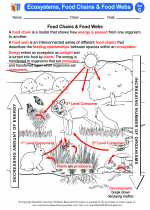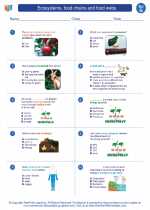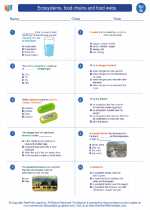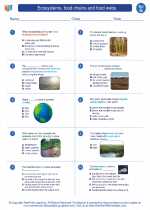Boreal Forest
The boreal forest, also known as taiga, is a biome characterized by its coniferous trees and cold climate. It spans across the northern regions of North America, Europe, and Asia, encircling the Arctic Circle. The boreal forest is the largest terrestrial biome, covering about 11% of the Earth's land area.
Climate
The boreal forest experiences long, cold winters and short, mild summers. The average annual temperature ranges from -40°C to 20°C, with precipitation primarily falling as snow during the winter months. The short growing season is a defining characteristic of the boreal forest, influencing the types of plants and animals that can thrive in this environment.
Flora and Fauna
Coniferous trees such as spruce, fir, pine, and larch dominate the boreal forest landscape. These trees have adapted to the harsh climate by retaining their needle-like leaves year-round and producing cones to protect their seeds. Other plant species include mosses, lichens, and low-lying shrubs.
The animal inhabitants of the boreal forest include species like moose, bears, wolves, lynx, and various bird species. Many of these animals have thick fur or feathers to insulate them from the cold, and some hibernate during the winter months to conserve energy.
Human Impact
Human activities such as logging, mining, and oil and gas exploration have had a significant impact on the boreal forest. Clear-cutting of trees and industrial development have led to habitat loss and fragmentation, affecting the wildlife and plant species that depend on this ecosystem.
Conservation Efforts
Efforts to conserve the boreal forest include establishing protected areas, promoting sustainable forestry practices, and conducting research to better understand the ecological dynamics of this biome. Collaboration between governments, Indigenous communities, and conservation organizations is essential for the long-term preservation of the boreal forest.
Study Guide
- What are the main characteristics of the boreal forest biome?
- Describe the climate of the boreal forest and its impact on the ecosystem.
- Identify the dominant plant species in the boreal forest and explain how they have adapted to the environment.
- Discuss the animal species found in the boreal forest and their adaptations to the cold climate.
- How have human activities affected the boreal forest, and what conservation efforts are being made to protect this biome?
Studying the boreal forest provides insights into the adaptations of living organisms to extreme environmental conditions and the importance of conservation in preserving Earth's diverse biomes.
.◂Science Worksheets and Study Guides Seventh Grade. Ecosystems, food chains and food webs

 Activity Lesson
Activity Lesson
 Worksheet/Answer key
Worksheet/Answer key
 Worksheet/Answer key
Worksheet/Answer key
 Worksheet/Answer key
Worksheet/Answer key
 Vocabulary/Answer key
Vocabulary/Answer key
 Vocabulary/Answer key
Vocabulary/Answer key
 Vocabulary/Answer key
Vocabulary/Answer key
 Vocabulary/Answer key
Vocabulary/Answer key
 Vocabulary/Answer key
Vocabulary/Answer key
